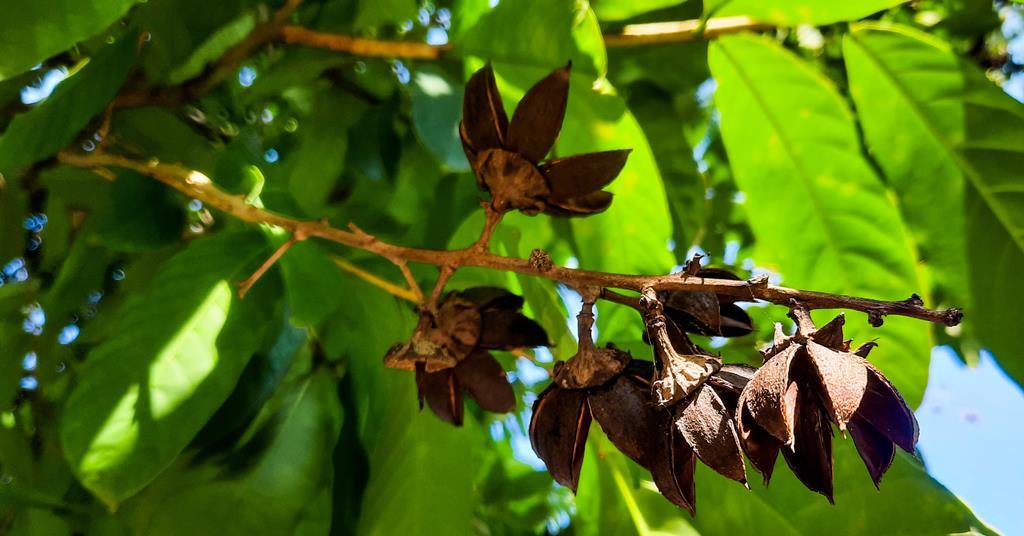Fitness
Genetic engineering feat coaxes yeast to produce valuable vaccine compound

Yeast has been engineered to perform the complete biosynthesis of QS-21, a potent and highly sought-after saponin-based adjuvant that boosts the immune response to certain vaccines.
The work represents one of the longest biosynthetic pathways ever transplanted into an organism, introducing 38 enzyme-encoding genes from six different species into yeast. The approach promises to enable a scalable, sustainable and cheaper way to make QS-21, as well as aid the design of new adjuvants.
Researchers have focused on the soap-like compound QS-21 as a vaccine adjuvant since the late 1990s for its ability to activate the immune system. Currently, it’s the only saponin-based vaccine adjuvant approved for clinical use in commercial vaccines, including ones for shingles, malaria and Covid-19, something which prompted concerns about QS-21 availability during the pandemic.
’From a world health perspective, there’s a lot of need for an alternative source of this adjuvant,’ says Jay Keasling at the University of California, Berkeley, US, who spearheaded the work with an international team of collaborators.
QS-21 is usually isolated from the bark of the soapbark tree, Quillaja saponaria, which is only found in Chile. Demand for QS-21 is high but supplies are limited because harvesting the bark requires mature trees and is tightly regulated. What’s more the isolation and purification of QS-21 from the mixture of compounds in bark extract is laborious, costly, uses toxic chemicals and has low yields.
Total synthesis of QS-21 has been previously achieved. However, it required the synthesis of an intermediate chemical first, takes 76 steps owing to the molecule’s complex structure – a glycosylated triterpene scaffold core coupled to a complex glycosylated 18-carbon acyl chain – and yields are poor.
One company, Botanical Solution in California, claims to have solved the supply and cost issues by devising and commercialising a plant tissue culture method to extract QS-21 using soapbark seedlings grown in the lab. Meanwhile, industry-led research published in March this year involving a number of biotech companies, presented another viable production route via cultured plant cells.
Keasling, however, thinks yeast offers the ideal alternative. ‘I want to make everything from a single sugar,’ he says. ‘I’d like to start with glucose, so when the production is performed in large tanks, they’re able to produce QS-21 as easily and inexpensively as possible.’
Pathway to success
The bioengineering feat of making QS-21 in yeast was possible following work published in January this year by some of the same team, including Keasling and Anne Osbourne at the John Innes Centre in Norwich, UK. They identified the complete 20-step biosynthetic pathway of QS-21, reproducing it in tobacco.
To reconstitute this pathway in yeast and make QS-21 from just glucose and galactose, the team first upregulated and fine tuned the passage of metabolites in the yeast strain’s native mevalonate pathway to produce quillaic acid, a key component of QS-21 synthesis. Meanwhile, using Crispr genome editing, enzyme-encoding genes from six other organisms, including plants that produce structurally similar saponins, fungi and bacteria were inserted. In total 38 enzymes spanning seven enzyme families were introduced, while ensuring critical metabolic pathways were unaffected for the yeast’s growth and survival.
‘This is a masterpiece of metabolic engineering, which shows how recent advances in synthetic biology like Crispr–Cas9 can be used to accelerate the discovery and engineering of pathways for the production of highly valuable molecules,’ says synthetic biologist Rodrigo Ledesma Amaro at Imperial College London, UK. ‘This is also a fantastic example of how microbial bioproduction can be an alternative to unsustainable plant extraction practices.’
‘The scale of the work undertaken in the study is quite extraordinary. It’s certainly up there as one of the most complex feats of metabolic engineering,’ says Paul Race, who researches natural product biosynthesis at Newcastle University, UK. ‘Work of this type is fraught with complications and I am in no doubt that a Herculean effort has been needed to get the system working as well as it does.’
However, both Amaro and Race note that low yields are an issue. Currently, it takes three days for the engineered yeast to produce around a third of the amount of QS-21 that the cells of the soapbark tree produces. Nevertheless, Keasling points out that yeast is around 1000 times faster than trees because only mature trees produce QS-21. ‘Even at the levels we’re producing it, it’s cheaper than producing it from the plant.’
‘Significant optimisation of the yeast platform is still required to achieve the yields needed to make this a viable route for QS-21 production at scale,’ Race comments. ‘This study represents the start of a journey that will hopefully result in access to this important molecule via a route that is uncoupled from the well-documented issues of isolation from the soapbark tree.’










